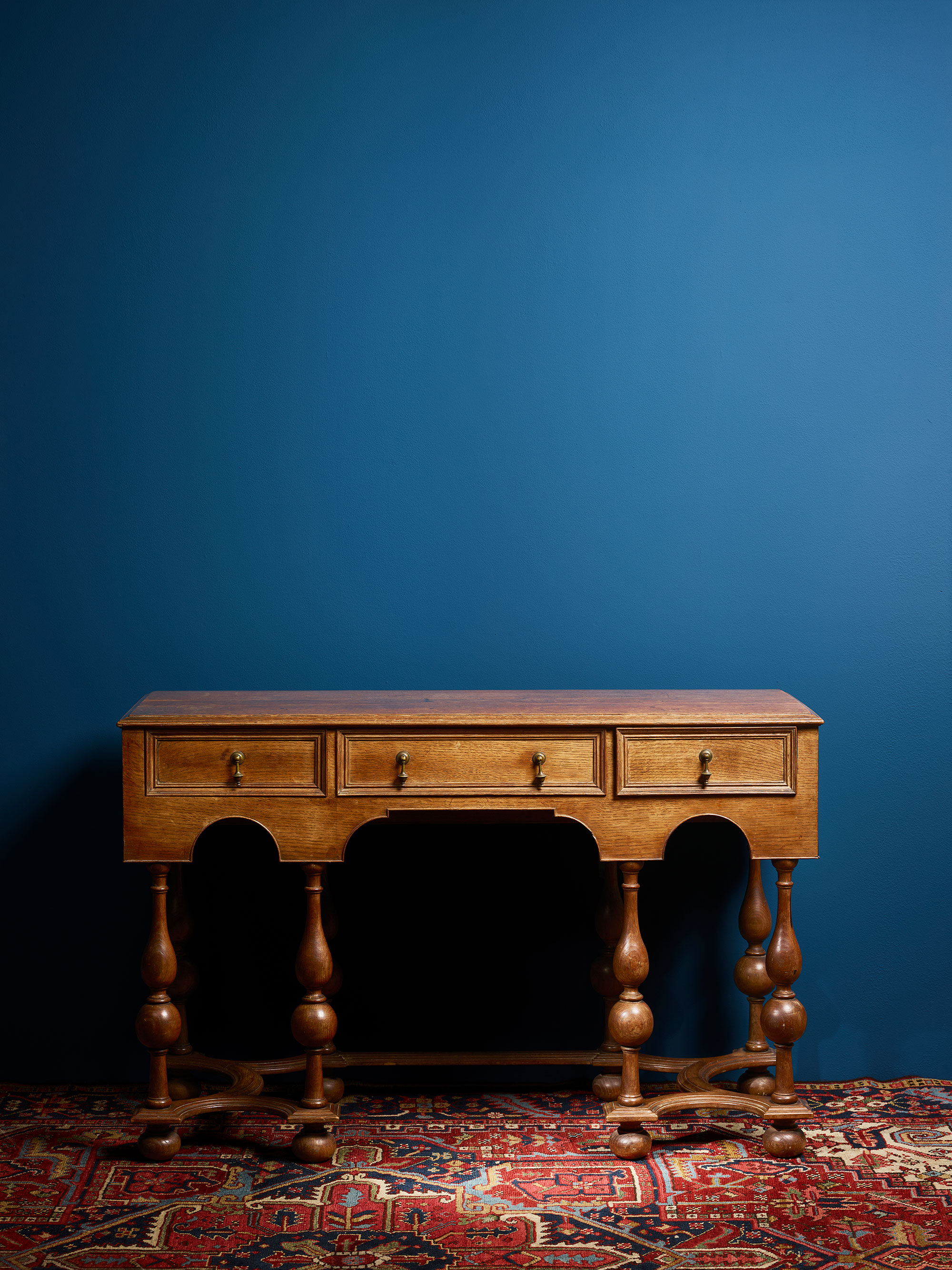SIR EDWIN LUTYENS (BRITISH 1869-1944)
SIDE TABLE, 1902
Estimate: £10,000 - £15,000
Auction: 19 March 2025 from 10:00 BST
Description
oak, with brass fittings, made by William Skull & Son Ltd., High Wycombe
Dimensions
81cm high, 124cm wide, 48.5cm deep (32in high, 48 ¾in wide, 19 ¼in deep)
Provenance
Edward Hudson, Deanery Garden, Berkshire
With John Ashton Beer
Footnote
Sir Edwin Lutyens is renowned for his architectural achievements, including Castle Drogo, Little Thakeham, and Campion Hall, as well as his role in designing war memorials for the Imperial War Graves Commission and planning New Delhi. Yet his influence extended to furniture design, where he applied the same meticulous attention to detail and craftsmanship that defined his architectural work.
Growing up in the Surrey countryside, Lutyens developed a keen interest in architecture from a young age, spending his childhood sketching buildings and honing his drawing skills. Although illness kept him from public school, his early immersion in construction influenced his later career. By the age of twenty, he had established his own practice in London, combining his architectural knowledge with an intuitive understanding of proportions and spatial relationships that would later shape his furniture designs.
Lutyens’ furniture is noted for its eclecticism, drawing inspiration from historical styles but always adapting them in his own distinctive way. While he drew from historical references, he never replicated designs verbatim; instead, he adapted and subtly altered proportions and details to suit his own vision. For example, Lutyens had a particular aversion to "dead proportions," often opting for slight adjustments to standard measurements—either slightly more or less than a half or quarter proportion.
The side table offered here was conceived as part of the interior scheme for Deanery Garden in Sonning, Berkshire, a ‘quintessential’ Lutyens property built 1899-1901. The illustrated scale plans of the furniture include annotations naming Edward Hudson, editor of Country Life and Lutyens’ good friend, for whom he designed Deanery Garden. Also mentioned is ‘Skull’, referencing the furniture workshop Walter Skull and Sons Ltd in High Wycombe, commissioned to complete the piece. The design for the set of ladderback chairs after Lutyens offered here is also featured on this sheet.
The table’s frieze and drop handles echo 17th and 18th century furniture, influenced by Lutyens' “furniture hunting” with Edward Hudson at Lindisfarne Castle. The bulbous legs, reminiscent of 16th-century refectory tables, are executed with a lighter touch, while the delicately arched stretchers at the base blend 17th-century elements with the Arts & Crafts style, seen also in the work of Sir Robert Lorimer. These adaptations showcase Lutyens’ skill in merging historical references with his modern sensibility and his ability to work closely with craftsmen like Skull allowed him to create furniture that was both aesthetically refined and technically sophisticated.

